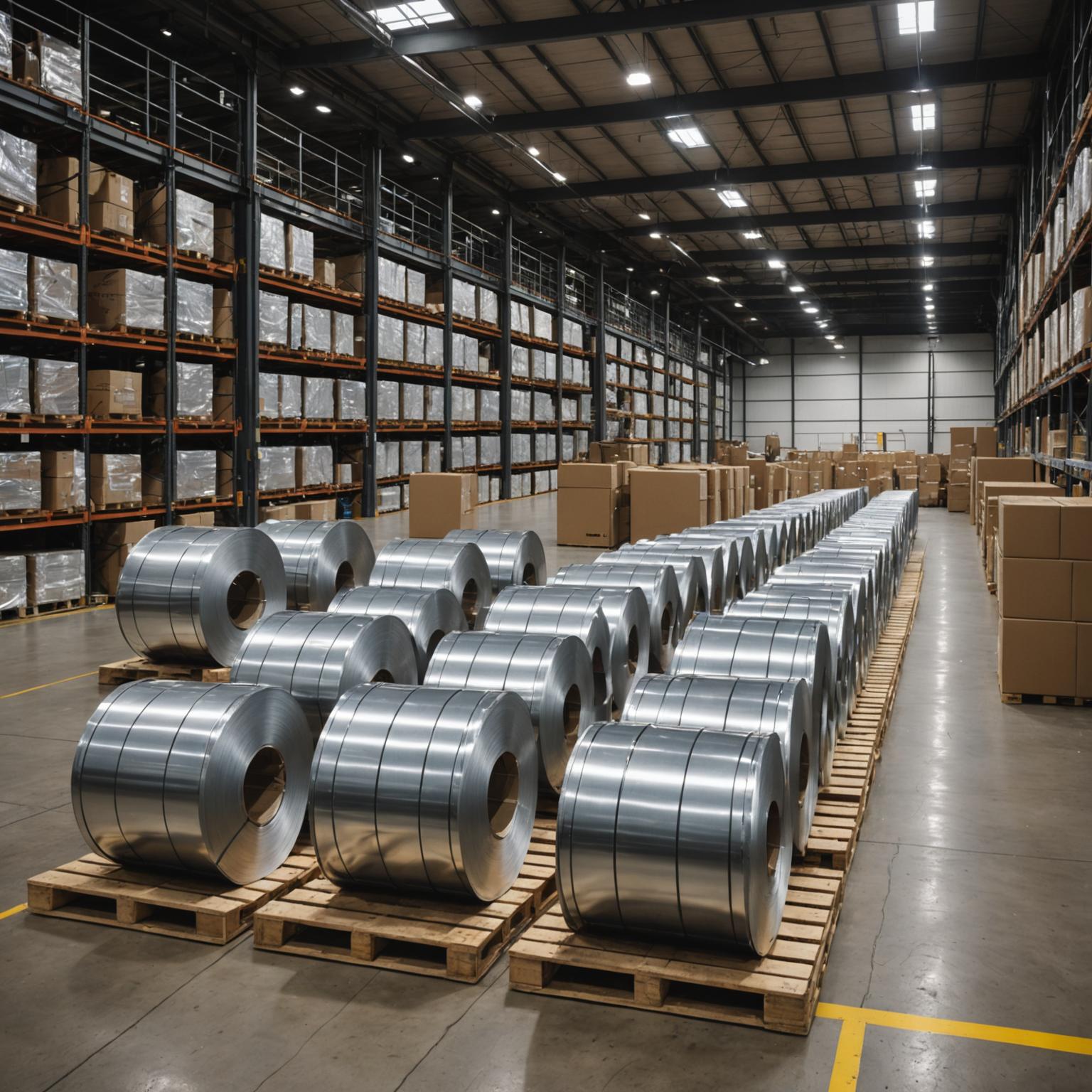Stainless steel coils are the backbone of countless industries, from construction and automotive manufacturing to aerospace and consumer appliances. Their superior strength, corrosion resistance, and aesthetic appeal make them an invaluable raw material. However, the journey from the production facility to the factory floor is fraught with potential risks. To preserve the pristine condition and structural integrity of these high-value assets, it is crucial to understand the best practices during the transportation and storage process. Mishandling at any stage can lead to scratches, dents, corrosion, and other forms of damage that can compromise quality and result in significant financial loss.
Pre-Transportation Checks and Packaging
Before a single coil begins its journey, meticulous preparation and packaging are essential. This first step is the primary line of defense against damage. High-quality stainless steel coils should be wrapped in protective materials to shield them from moisture and physical harm. Typically, this involves a multi-layer approach, starting with a layer of waterproof paper or plastic film applied directly to the coil's surface. This barrier is critical for preventing water spots and rust, especially during long-distance transit or in humid climates. Following this, a layer of durable, tear-resistant material is often added. The entire coil is then securely placed on a wooden or steel pallet, known as a skid, which allows for easy and safe handling by forklifts. Edge protectors made of cardboard or plastic should be applied to the inner and outer circumferences of the coil to prevent dents and deformations. Finally, the coil must be clearly labeled with essential information, including its weight, grade, dimensions, and specific handling instructions. Proper labeling ensures that everyone involved in the logistics chain understands how to manage the product safely.
Best Practices During Transportation
Once the coils are properly packaged, the focus shifts to the transit phase itself. The choice of vehicle and the method of securing the load are paramount. Flatbed trucks, railcars, or shipping containers used for transport must have a clean, dry, and flat surface free of debris that could puncture the packaging or damage the coils. The coils must be firmly secured using straps, chains, or blocking and bracing techniques to prevent any movement or shifting during transit. Any motion can cause the coils to collide with each other or the sides of the vehicle, leading to significant surface and edge damage. For open-air transport, such as on a flatbed truck, the entire load must be covered with a heavy-duty, waterproof tarp. This protects the coils from rain, snow, road salt, and other environmental contaminants that could initiate corrosion. Drivers should also be trained to handle such heavy and sensitive cargo, avoiding sudden stops, sharp turns, and excessive speed that could destabilize the load. Careful driving is a simple yet effective measure for safeguarding the shipment of stainless steel coils.
Safe Unloading and Inspection Procedures
Upon arrival at the destination, the unloading process requires as much care as the loading process. Using the wrong equipment or improper techniques is a common cause of damage. Forklifts should be equipped with a specialized coil ram, a single, long pole that goes through the eye of the coil, or specialized C-hooks attached to overhead cranes. Standard forklift forks should never be used to lift a coil from its side, as this concentrates pressure and will inevitably cause dents and deform the coil's shape. As soon as the coils are unloaded, a thorough inspection should be conducted before signing off on the delivery. Personnel should carefully examine the packaging for any signs of tears, water stains, or physical impact. If the packaging is compromised, the coil itself should be inspected for scratches, dents, or signs of moisture. Any discovered damage should be immediately documented with detailed notes and photographs, and the supplier should be notified before the material is accepted or moved into inventory. This diligence ensures accountability and helps in filing any necessary freight claims.
Proper Storage of Stainless Steel Coils
Once successfully unloaded, the final critical step is proper storage. So, what are the best practices for the long-term or short-term storage of stainless steel coils? The ideal storage environment is a clean, dry, and climate-controlled indoor warehouse. Outdoor storage is strongly discouraged, as exposure to the elements will inevitably lead to corrosion and degradation. Coils should never be stored directly on concrete floors, as this can trap moisture and lead to water stains and rust on the bottom surface. Instead, they should be kept on their original pallets or placed on specially designed saddles or cradles that elevate them off the ground and distribute their weight evenly. It's also crucial to avoid storing stainless steel in close proximity to carbon steel or other dissimilar metals. Contact or even airborne particles from carbon steel grinding can cause galvanic corrosion on the stainless steel surface. Ensure there is adequate space between coils to allow for air circulation, which helps prevent condensation buildup. Implementing a First-In, First-Out (FIFO) inventory system is also a wise strategy to ensure that coils do not remain in storage for excessively long periods.
Ensuring Longevity and Quality
In conclusion, protecting the value and quality of stainless steel coils requires a comprehensive and disciplined approach. From the moment a coil leaves the production line to the time it is used in manufacturing, every step matters. What should we pay attention to is not a single action, but a chain of best practices that includes robust packaging, secure and careful transportation, safe handling during unloading, and meticulous storage in a controlled environment. By adhering to these guidelines, companies can minimize the risk of damage, prevent financial losses, and ensure that the final product reflects the superior quality inherent in the material itself. This attention to detail guarantees that the stainless steel performs flawlessly in its intended application, upholding the standards of excellence that customers expect.








